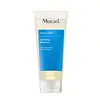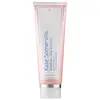What's inside
What's inside
 Key Ingredients
Key Ingredients

 Benefits
Benefits

 Concerns
Concerns

 Ingredients Side-by-side
Ingredients Side-by-side

Water
Skin ConditioningCocamidopropyl Betaine
CleansingSodium C14-16 Olefin Sulfonate
CleansingMethyl Gluceth-20
HumectantPPG-26-Buteth-26
Skin ConditioningPEG-40 Hydrogenated Castor Oil
EmulsifyingButylene Glycol
HumectantCimicifuga Racemosa Root Extract
AntimicrobialCamellia Oleifera Leaf Extract
AstringentSilver Citrate
AntimicrobialMenthol
MaskingPEG-150 Distearate
EmulsifyingZea Mays Starch
AbsorbentHydrolyzed Corn Starch
HumectantHydrolyzed Corn Starch Octenylsuccinate
AbsorbentGlyceryl Stearate
EmollientCocamidopropyl Dimethylamine
EmulsifyingPolysorbate 80
EmulsifyingCitric Acid
BufferingTetrasodium EDTA
Chlorphenesin
AntimicrobialMethylisothiazolinone
PreservativeLimonene
PerfumingAngelica Archangelica Leaf Oil
PerfumingCymbopogon Nardus Oil
MaskingCitrus Limon Peel Oil
MaskingCitrus Aurantifolia Oil
CleansingLavandula Hybrida Oil
EmollientCitrus Aurantium Dulcis Peel Oil
MaskingPrunus Armeniaca Kernel Oil
MaskingParfum
MaskingWater, Cocamidopropyl Betaine, Sodium C14-16 Olefin Sulfonate, Methyl Gluceth-20, PPG-26-Buteth-26, PEG-40 Hydrogenated Castor Oil, Butylene Glycol, Cimicifuga Racemosa Root Extract, Camellia Oleifera Leaf Extract, Silver Citrate, Menthol, PEG-150 Distearate, Zea Mays Starch, Hydrolyzed Corn Starch, Hydrolyzed Corn Starch Octenylsuccinate, Glyceryl Stearate, Cocamidopropyl Dimethylamine, Polysorbate 80, Citric Acid, Tetrasodium EDTA, Chlorphenesin, Methylisothiazolinone, Limonene, Angelica Archangelica Leaf Oil, Cymbopogon Nardus Oil, Citrus Limon Peel Oil, Citrus Aurantifolia Oil, Lavandula Hybrida Oil, Citrus Aurantium Dulcis Peel Oil, Prunus Armeniaca Kernel Oil, Parfum
Sulfur 3%
AntiseborrhoeicWater
Skin ConditioningSodium Cocoyl Isethionate
CleansingCoco-Glucoside
CleansingAcrylates Copolymer
Cetearyl Alcohol
EmollientGlycereth-18 Ethylhexanoate
Skin ConditioningGlycereth-18
HumectantStearyl Alcohol
EmollientHoney Extract
HumectantOryza Sativa Bran Extract
Skin ConditioningAvena Sativa Kernel Extract
AbrasiveOligopeptide-10
AntimicrobialBoswellia Serrata Extract
Skin ConditioningBehenyl Alcohol
EmollientGlycerin
HumectantXanthan Gum
EmulsifyingCaprylyl Glycol
EmollientHexylene Glycol
EmulsifyingButylene Glycol
HumectantPhenoxyethanol
PreservativeParfum
MaskingCitric Acid
BufferingSodium Hydroxide
BufferingEthylhexylglycerin
Skin ConditioningDisodium EDTA
Disodium Carboxyethyl Siliconate
Skin ConditioningLinalool
PerfumingPotassium Sorbate
PreservativeSodium Benzoate
MaskingCI 77891
Cosmetic ColorantCI 77491
Cosmetic ColorantSulfur 3%, Water, Sodium Cocoyl Isethionate, Coco-Glucoside, Acrylates Copolymer, Cetearyl Alcohol, Glycereth-18 Ethylhexanoate, Glycereth-18, Stearyl Alcohol, Honey Extract, Oryza Sativa Bran Extract, Avena Sativa Kernel Extract, Oligopeptide-10, Boswellia Serrata Extract, Behenyl Alcohol, Glycerin, Xanthan Gum, Caprylyl Glycol, Hexylene Glycol, Butylene Glycol, Phenoxyethanol, Parfum, Citric Acid, Sodium Hydroxide, Ethylhexylglycerin, Disodium EDTA, Disodium Carboxyethyl Siliconate, Linalool, Potassium Sorbate, Sodium Benzoate, CI 77891, CI 77491
 Reviews
Reviews

Ingredients Explained
These ingredients are found in both products.
Ingredients higher up in an ingredient list are typically present in a larger amount.
Butylene Glycol (or BG) is used within cosmetic products for a few different reasons:
Overall, Butylene Glycol is a safe and well-rounded ingredient that works well with other ingredients.
Though this ingredient works well with most skin types, some people with sensitive skin may experience a reaction such as allergic rashes, closed comedones, or itchiness.
Learn more about Butylene GlycolCitric Acid is an alpha hydroxy acid (AHA) naturally found in citrus fruits like oranges, lemons, and limes.
Like other AHAs, citric acid can exfoliate skin by breaking down the bonds that hold dead skin cells together. This helps reveal smoother and brighter skin underneath.
However, this exfoliating effect only happens at high concentrations (20%) which can be hard to find in cosmetic products.
Due to this, citric acid is usually included in small amounts as a pH adjuster. This helps keep products slightly more acidic and compatible with skin's natural pH.
In skincare formulas, citric acid can:
While it can provide some skin benefits, research shows lactic acid and glycolic acid are generally more effective and less irritating exfoliants.
Most citric acid used in skincare today is made by fermenting sugars (usually from molasses). This synthetic version is identical to the natural citrus form but easier to stabilize and use in formulations.
Read more about some other popular AHA's here:
Learn more about Citric AcidParfum is a catch-all term for an ingredient or more that is used to give a scent to products.
Also called "fragrance", this ingredient can be a blend of hundreds of chemicals or plant oils. This means every product with "fragrance" or "parfum" in the ingredients list is a different mixture.
For instance, Habanolide is a proprietary trade name for a specific aroma chemical. When used as a fragrance ingredient in cosmetics, most aroma chemicals fall under the broad labeling category of “FRAGRANCE” or “PARFUM” according to EU and US regulations.
The term 'parfum' or 'fragrance' is not regulated in many countries. In many cases, it is up to the brand to define this term.
For instance, many brands choose to label themselves as "fragrance-free" because they are not using synthetic fragrances. However, their products may still contain ingredients such as essential oils that are considered a fragrance by INCI standards.
One example is Calendula flower extract. Calendula is an essential oil that still imparts a scent or 'fragrance'.
Depending on the blend, the ingredients in the mixture can cause allergies and sensitivities on the skin. Some ingredients that are known EU allergens include linalool and citronellol.
Parfum can also be used to mask or cover an unpleasant scent.
The bottom line is: not all fragrances/parfum/ingredients are created equally. If you are worried about fragrances, we recommend taking a closer look at an ingredient. And of course, we always recommend speaking with a professional.
Learn more about ParfumWater. It's the most common cosmetic ingredient of all. You'll usually see it at the top of ingredient lists, meaning that it makes up the largest part of the product.
So why is it so popular? Water most often acts as a solvent - this means that it helps dissolve other ingredients into the formulation.
You'll also recognize water as that liquid we all need to stay alive. If you see this, drink a glass of water. Stay hydrated!
Learn more about Water